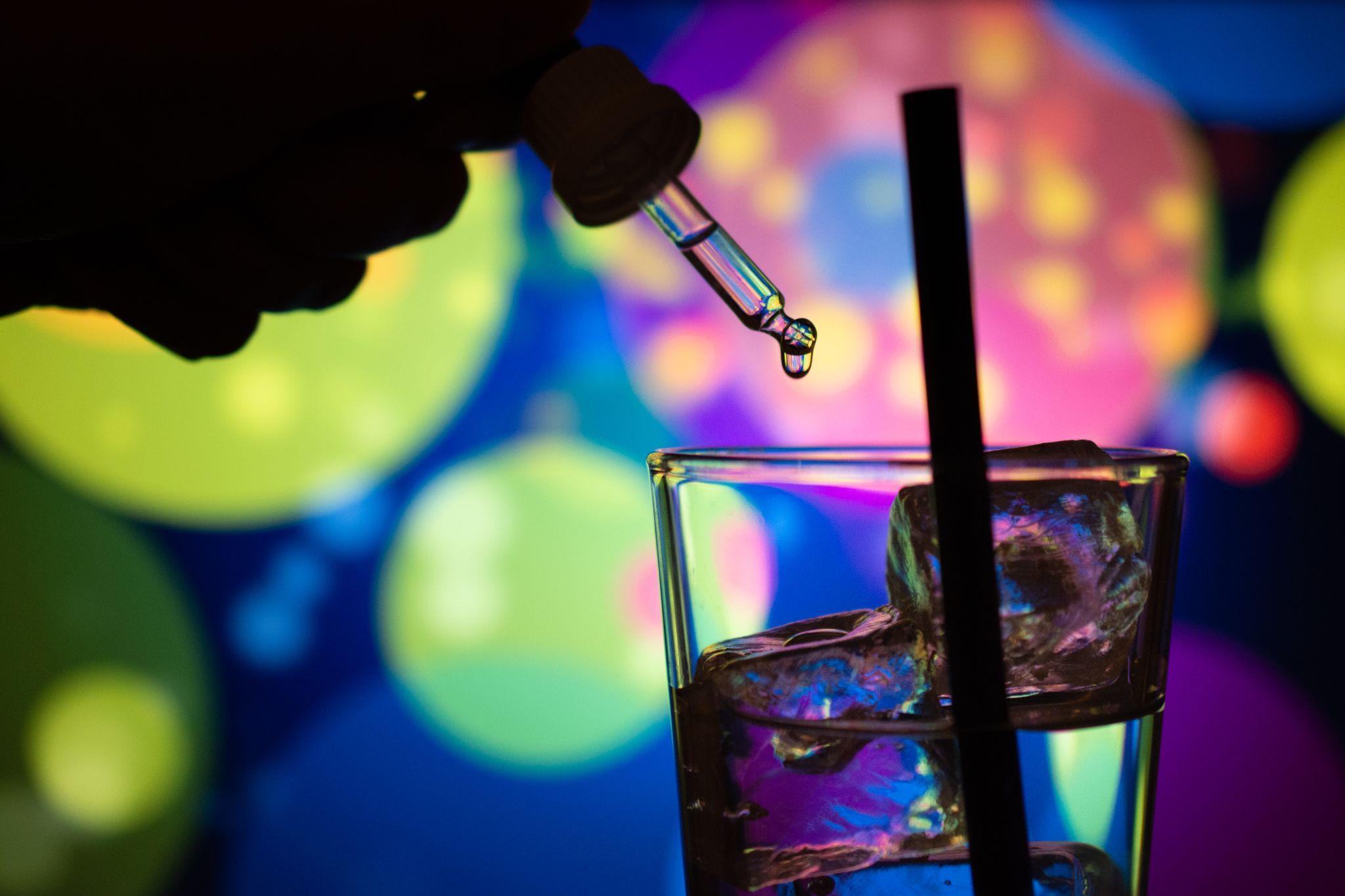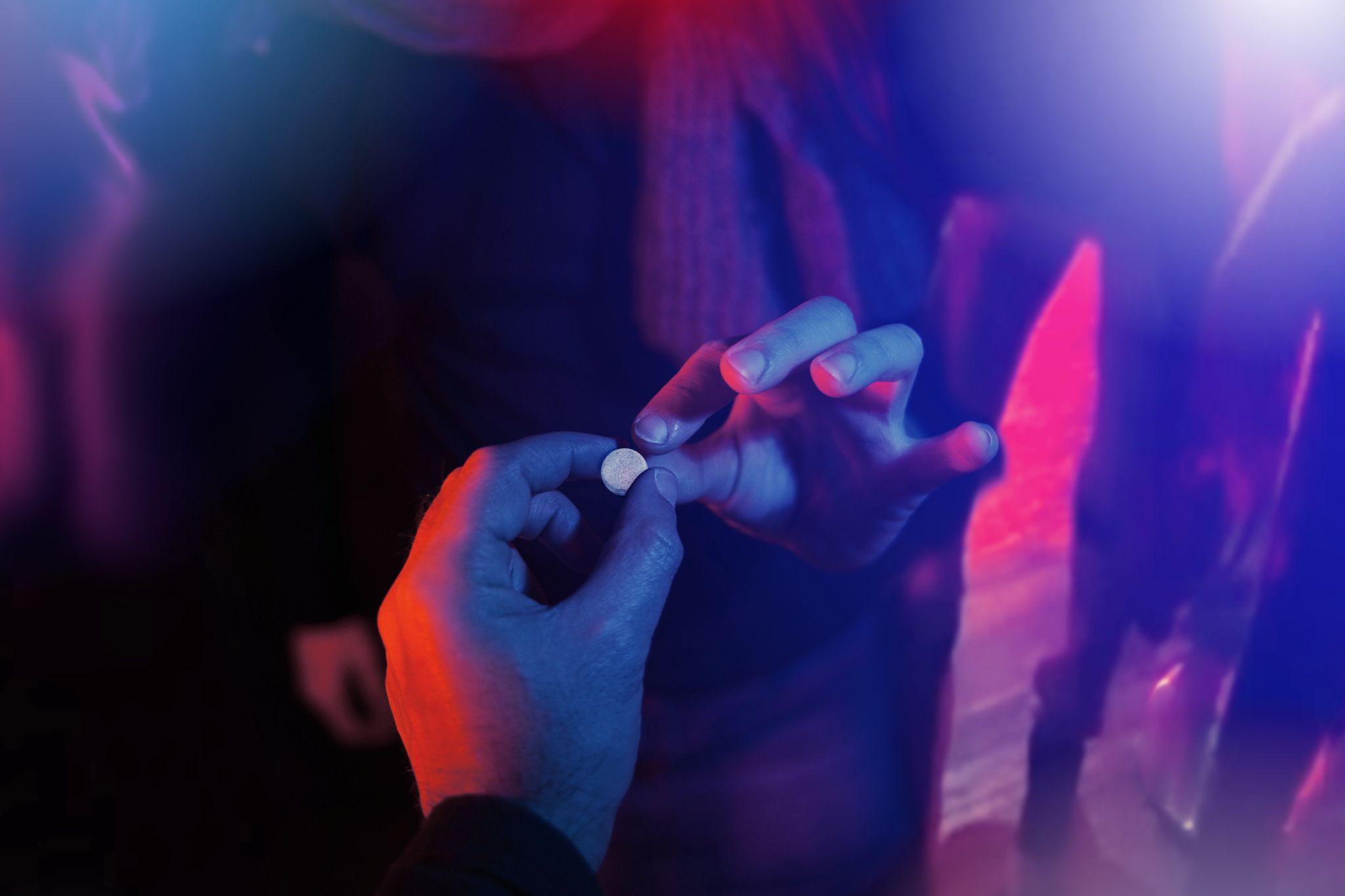In the world of nightlife, party drugs, also known as club drugs, have become a staple for many individuals looking to enhance their experiences. These substances are prevalent at parties, concerts, bars, and dance clubs, where their use can often seem like a way to amplify the fun.
However, the reality of party drugs in the United States is far more complex and dangerous than it might initially appear. To help those who might be struggling with a substance use disorder and their loved ones, it is important to know what party drugs are, why they’re used, the most common types, the dangers they pose, and how addiction to these substances can develop.
Defining Party Drugs
Party drugs are a diverse group of psychoactive substances that alter the functioning of the central nervous system. Effects of party drugs can significantly impact mood, perception, and behavior, creating intense and often unpredictable experiences. The main attractions of club drugs include their ability to temporarily enhance sensory experiences, reduce inhibitions, increase energy, and promote a sense of euphoria or deep relaxation.
Party drugs are predominantly used in social settings where music, dancing, and communal experiences are central, such as nightclubs, bars, concerts, music festivals, and private parties. In these environments, people often seek heightened sensory experiences and social bonding facilitated by these substances.
Why People Use Party Drugs
The use of party drugs is driven by a variety of psychological, social, and environmental factors. Psychologically, the primary draw of party drugs is the intense euphoria they induce. This feeling of extreme pleasure, often far beyond what can be naturally achieved, makes these substances highly attractive to users.
Social and environmental factors also play a significant role in the use of party drugs. In social settings where drug use is common, individuals may feel pressured to partake in order to fit in with their peers. The desire to be accepted and not feel left out can drive many to experiment with party drugs.
Cultural influences further shape the use of party drugs. Media, movies, music, and social media often glamorize drug use in young people, portraying it as a normal and desirable part of socializing and having fun. Certain subcultures, such as the electronic dance music (EDM) scene, are closely associated with the use of party drugs, with the music, environment, and community within these cultures often promoting drug use as part of the experience.
Common Types of Party Drugs
Several types of party drugs are widely used, each with its own effects and risks. Here are some of the most common party drugs:1
- MDMA (Methylenedioxymethamphetamine): Also known as ecstasy or molly, MDMA is popular for its ability to produce feelings of euphoria, emotional closeness, and heightened sensory perception.
- GHB (Gamma-hydroxybutyrate): Known as G or liquid ecstasy, GHB is a depressant that can produce relaxation and euphoria but is also associated with significant risks, including overdose.
- Ketamine: Often referred to as special K or K, ketamine is an anesthetic that can cause dissociation, making users feel detached from their body and surroundings.
- Rohypnol: Commonly known as roofies, Rohypnol is a powerful sedative that can incapacitate users, often leading to its use in drug-facilitated sexual assault.
- Methamphetamine: Known as speed, ice, or meth, this stimulant produces intense euphoria and energy but is highly addictive and damaging to the body.
- LSD (Lysergic Acid Diethylamide): Known as acid, LSD is a hallucinogen that can significantly alter perceptions and lead to profound psychological experiences.
While some of these drugs have legitimate medical uses, their misuse in party settings poses severe health risks.
The Dangers of Party Drugs
The use of party drugs carries numerous dangers, both immediate and long-term. One of the most significant risks is the potential for overdose. Because these drugs can be potent and their effects unpredictable, even a small amount can lead to serious health issues.
The effects include a wide range of symptoms like severe agitation, seizures, increase in body temperature, high blood pressure and heart rate, loss of muscle control, and hallucinations to respiratory depression, cardiac arrest, coma, and death.2
Another major danger is their use as “date rape” drugs. Substances like GHB, Rohypnol, and ketamine can incapacitate individuals, making them vulnerable to sexual assault. Very common among young adults, these drugs can be slipped into drinks without the victim’s knowledge, leading to dangerous and traumatic situations.
Once ingested, these substances can cause confusion, drowsiness, and memory loss, preventing the victim from resisting an assault or recalling details of the incident later.

Recognizing Party Drug Addiction
Addiction to party drugs can develop quickly, often without the user realizing it. Recognizing the signs of substance abuse is crucial for seeking help and starting the recovery process:
Increased Tolerance
One of the first signs of addiction is increased tolerance, where the user needs to take more of the drug to achieve the same effects. This occurs because the body becomes accustomed to the substance, requiring higher doses to produce the desired euphoria or sensory enhancement.
Withdrawal Symptoms
Withdrawal symptoms are another clear sign of addiction. When the effects of the drug wear off, the user may experience physical or psychological symptoms such as anxiety, depression, irritability, fatigue, nausea, and muscle pain. These symptoms can be severe and may drive the individual to continue using the drug to avoid discomfort.
Neglecting Responsibilities
As addiction takes hold, individuals may begin to neglect their responsibilities at work, school, or home. They might miss deadlines, perform poorly in their tasks, or skip important activities and events. This neglect is often due to preoccupation with drug use or recovery from its effects.
Continued Use Despite Harm
Addicted individuals often continue using the drug despite knowing it’s causing physical, psychological, or social problems. They might be aware of the damage the drug is doing to their body, mind, and relationships but feel powerless to stop. This compulsion to use despite adverse consequences is a hallmark of addiction.
Loss of Control
Loss of control is another key indicator of addiction. The individual might want to stop using the drug but find themselves unable to do so. They may make repeated attempts to quit or cut down but relapse repeatedly, feeling trapped in a cycle of drug use.
Changes in Behavior
Behavioral changes can also signal addiction. These might include secretive behavior, lying about drug use, changes in social circles, or withdrawal from family and friends. The individual might also engage in risky behaviors to obtain or use the drug.
Physical Health Decline
Physical health often deteriorates with continued drug use. Signs might include significant weight loss or gain, poor hygiene, frequent illnesses, and unexplained injuries. Specific drugs can cause particular health issues, such as dental problems with methamphetamine or bladder issues with ketamine.
Get Help for Party Drug Addiction With Lumina Recovery
Party drugs may seem like a way to enhance social experiences, but their risks far outweigh the temporary pleasures they provide. If you or someone you know is struggling with party drug addiction, it’s important to reach out to a professional for support and guidance.
Lumina Recovery provides addiction treatment support for a wide variety of drugs including party drugs at our inpatient and outpatient facilities. Recovery is possible, and taking the first step is crucial for a healthier, drug-free future.
Take that first step toward sobriety and recovery by reaching out to our addiction specialists for support today.
Sources:


